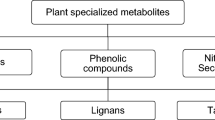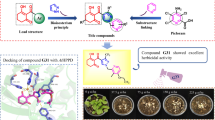Abstract.
Thionins belong to a rapidly growing family of biologically active peptides in the plant kingdom. Thionins are small (∼5 kDA), cysteine-rich peptides with toxic and antimicrobial properties. They show a broad cellular toxicity against wide range of organisms and eukaryotic cell lines; while possessing some selectivity. Thionins are believed to be involved in protection against plant pathogens, including bacteria and fungi, by working directly at the membrane. The direct mechanism of action is still surrounded by controversy. Here the results of structural studies are reviewed and confronted with recent results of biophysical studies aimed at defining the function of thionins. The proposed toxicity mechanisms are reviewed and the attempt to reconcile competing hypotheses with a wealth of structural and functional studies is made.
Similar content being viewed by others
Author information
Authors and Affiliations
Corresponding author
Additional information
Received 3 December 2005; received after revision 6 February 2006; accepted 18 March 2006
Rights and permissions
About this article
Cite this article
Stec, B. Plant thionins – the structural perspective. Cell. Mol. Life Sci. 63, 1370–1385 (2006). https://doi.org/10.1007/s00018-005-5574-5
Published:
Issue Date:
DOI: https://doi.org/10.1007/s00018-005-5574-5




